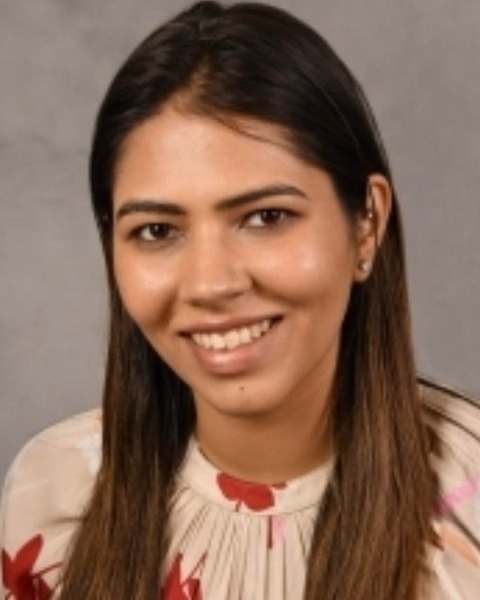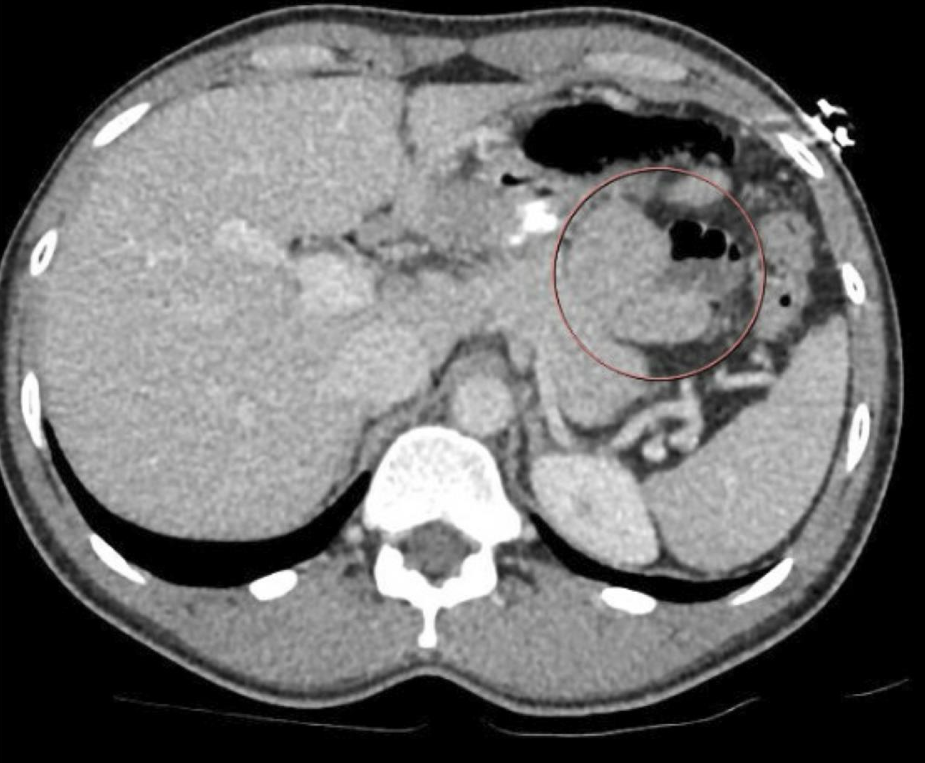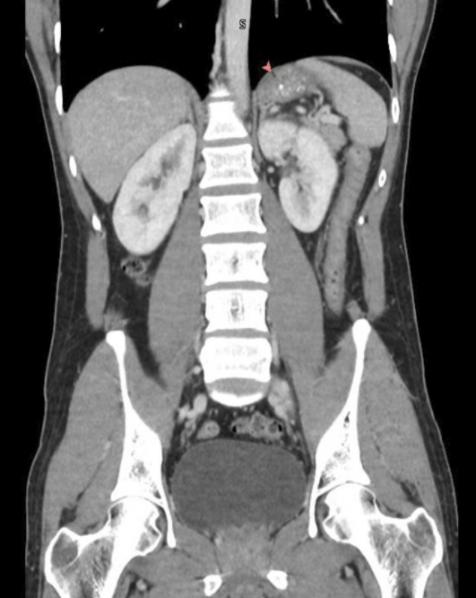Monday Poster Session
Category: Small Intestine
P4137 - A Hidden Culprit: Left Paraduodenal Hernia Presenting as Chronic Abdominal Pain
Monday, October 27, 2025
10:30 AM - 4:00 PM PDT
Location: Exhibit Hall

Avneet Kaur, MBBS (she/her/hers)
SUNY Upstate Medical University
Syracuse, NY
Presenting Author(s)
Avneet Kaur, MBBS1, Avleen Kaur, MD2, Ronald Szyjkowski, MD2
1SUNY Upstate Medical University Hospital, Syracuse, NY; 2SUNY Upstate Medical University, Syracuse, NY
Introduction: Chronic abdominal pain in young adults can be diagnostically challenging, particularly when initial evaluations are unrevealing. While functional disorders are often considered, rare etiologies such as internal hernias, connective tissue disorders, hereditary angioedema, or neurovisceral syndromes may go unrecognized. Paraduodenal hernias, a form of congenital internal hernia, can present subtly and are frequently missed in the absence of obstruction or classic imaging findings.
Case Description/
Methods: A 37-year-old man presented with intermittent epigastric and right upper quadrant pain for several months. The pain was colicky, worsened by spicy food, and without associated GI bleeding, NSAID use, or weight loss. He had four healthcare visits in the past six months, including multiple outpatient evaluations, emergency visits, and a surgical consultation for presumed gallbladder disease—all inconclusive.
He re-presented with worsening pain, hypotension, and tachycardia. CT imaging showed foci of air in the gastric wall and a cluster of mildly distended jejunal loops between the posterior stomach and transverse colon. Concern was raised for a penetrating gastric ulcer, and he was managed conservatively with IV PPI and bowel rest. EGD was normal, but symptoms persisted.
At an outside hospital, re-evaluation of prior imaging prompted surgical exploration. Intraoperatively, a left paraduodenal hernia protruding through the transverse mesocolon was identified. Although no clear mesenteric defect was found, the mesocolon was excessively lax, creating a pseudo-defect that permitted intermittent herniation. The patient underwent exploratory laparotomy with hernia repair via mesocolon approximation and mesh reinforcement. Postoperatively, his symptoms resolved completely.
Discussion: Paraduodenal hernias are rare and often missed causes of chronic abdominal pain in younger patients. This case highlights the need for surgical re-evaluation in the setting of persistent symptoms and inconclusive imaging, especially when rare but correctable etiologies remain unaddressed.

Figure: Figure 1. Coronal CT image showing clustered jejunal loops in the left upper quadrant.

Figure: Figure 2. Axial CT image highlighting the internal herniation of jejunal loops.
Disclosures:
Avneet Kaur indicated no relevant financial relationships.
Avleen Kaur indicated no relevant financial relationships.
Ronald Szyjkowski indicated no relevant financial relationships.
Avneet Kaur, MBBS1, Avleen Kaur, MD2, Ronald Szyjkowski, MD2. P4137 - A Hidden Culprit: Left Paraduodenal Hernia Presenting as Chronic Abdominal Pain, ACG 2025 Annual Scientific Meeting Abstracts. Phoenix, AZ: American College of Gastroenterology.
1SUNY Upstate Medical University Hospital, Syracuse, NY; 2SUNY Upstate Medical University, Syracuse, NY
Introduction: Chronic abdominal pain in young adults can be diagnostically challenging, particularly when initial evaluations are unrevealing. While functional disorders are often considered, rare etiologies such as internal hernias, connective tissue disorders, hereditary angioedema, or neurovisceral syndromes may go unrecognized. Paraduodenal hernias, a form of congenital internal hernia, can present subtly and are frequently missed in the absence of obstruction or classic imaging findings.
Case Description/
Methods: A 37-year-old man presented with intermittent epigastric and right upper quadrant pain for several months. The pain was colicky, worsened by spicy food, and without associated GI bleeding, NSAID use, or weight loss. He had four healthcare visits in the past six months, including multiple outpatient evaluations, emergency visits, and a surgical consultation for presumed gallbladder disease—all inconclusive.
He re-presented with worsening pain, hypotension, and tachycardia. CT imaging showed foci of air in the gastric wall and a cluster of mildly distended jejunal loops between the posterior stomach and transverse colon. Concern was raised for a penetrating gastric ulcer, and he was managed conservatively with IV PPI and bowel rest. EGD was normal, but symptoms persisted.
At an outside hospital, re-evaluation of prior imaging prompted surgical exploration. Intraoperatively, a left paraduodenal hernia protruding through the transverse mesocolon was identified. Although no clear mesenteric defect was found, the mesocolon was excessively lax, creating a pseudo-defect that permitted intermittent herniation. The patient underwent exploratory laparotomy with hernia repair via mesocolon approximation and mesh reinforcement. Postoperatively, his symptoms resolved completely.
Discussion: Paraduodenal hernias are rare and often missed causes of chronic abdominal pain in younger patients. This case highlights the need for surgical re-evaluation in the setting of persistent symptoms and inconclusive imaging, especially when rare but correctable etiologies remain unaddressed.

Figure: Figure 1. Coronal CT image showing clustered jejunal loops in the left upper quadrant.

Figure: Figure 2. Axial CT image highlighting the internal herniation of jejunal loops.
Disclosures:
Avneet Kaur indicated no relevant financial relationships.
Avleen Kaur indicated no relevant financial relationships.
Ronald Szyjkowski indicated no relevant financial relationships.
Avneet Kaur, MBBS1, Avleen Kaur, MD2, Ronald Szyjkowski, MD2. P4137 - A Hidden Culprit: Left Paraduodenal Hernia Presenting as Chronic Abdominal Pain, ACG 2025 Annual Scientific Meeting Abstracts. Phoenix, AZ: American College of Gastroenterology.
